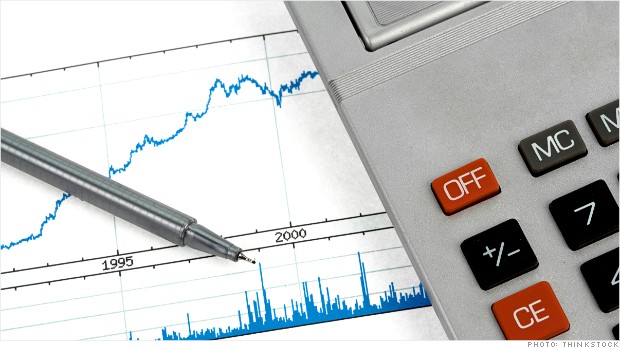
If you are close to retirement, you may want an investment that's shorter and safer than a typical bond fund.
(Money Magazine)
At the same time, experts are warning that bonds are a chancy play right now. Super-low interest rates will eventually head back up, which could trigger losses in your fixed-income funds.
Not on the menu
Many large 401(k) plans don't have funds in some important corners of the market.
| Funds | Percentage of plans with an option |
| Inflation-protected bond fund | 29% |
| High-yield fund | 20% |
| Foreign bond fund | 11% |
Source: BrightScope
There is a solution -- but also a catch. Many 401(k) investors don't have all the tools within their plan to implement a perfect portfolio.
The fix, in theory: First, own shorter-maturity bonds, which don't fall as far when rates rise. Then diversify.
T. Rowe Price financial planner Judith Ward suggests rounding out your portfolio with high-yield bonds, where credit is a bigger risk than rates, and international bonds. "Foreign issues react less to U.S. rate hikes," says Ward. You can also hedge against rising consumer prices by adding an inflation-protected TIPS fund.
In many 401(k)s, though, the diversification steps aren't possible. For example, only 11% of large plans offer foreign bonds, according to BrightScope, which gathers 401(k) data.
"Bonds have traditionally been an afterthought for employers and investors," says Rick Meigs, president of 401khelpcenter.com. That's not likely to change, since employers are shifting to target-date funds, which mix stocks and bonds in a single portfolio.
Still, there are ways to protect your retirement savings. Consider these three alternatives:
Use your IRA to bolster your bonds. The funds you lack in your plan can be purchased in an IRA.
Look at your 401(k)s and IRAs as one pie; you don't have to slice each account identically to get the mix you want. Own fewer stocks in your IRA, and more in your 401(k), to free up IRA money to buy a more diverse set of bond funds.
Related: Understanding bond fund types
Ward suggests a mix of 70% in high-quality intermediate term (TIPS can be part of that), 10% in high yield, 10% in foreign, and 10% in emerging markets.
Exploit the one edge in 401(k)s. If you are close to retirement, you may want an investment that's shorter and safer than a typical core bond fund. About 75% of large plans offer a stable-value fund, which fits the bill.
Split your fixed-income allocation between intermediate-term funds and stable value, suggests Chicago financial planner Roger Wohlner. Backed by insurance contracts and offered only in retirement plans, stable-value funds combine low risk with yields of about 1.6%.
Look beyond the next rate hike. A patient long-term investor can ride out paper losses on bond funds.
Related: Unlocking a safer, smarter portfolio
"Your retirement is likely to last for decades, which will take you through several interest rate cycles," says Colorado Springs financial adviser Allan Roth.
Over time, interest payments will be reinvested in issues with higher yield, which will eventually give you a higher return than hunkering down in cash. ![]()
First Published: June 17, 2013: 4:59 PM ET
Anda sedang membaca artikel tentang
The missing bond funds in your 401(k)
Dengan url
http://brokolsayuransehat.blogspot.com/2013/06/the-missing-bond-funds-in-your-401k.html
Anda boleh menyebar luaskannya atau mengcopy paste-nya
The missing bond funds in your 401(k)
namun jangan lupa untuk meletakkan link
The missing bond funds in your 401(k)
sebagai sumbernya
0 komentar:
Posting Komentar